Seongjoon Kang
Spatially Consistent Air-to-Ground Channel Modeling via Generative Neural Networks
Feb 05, 2024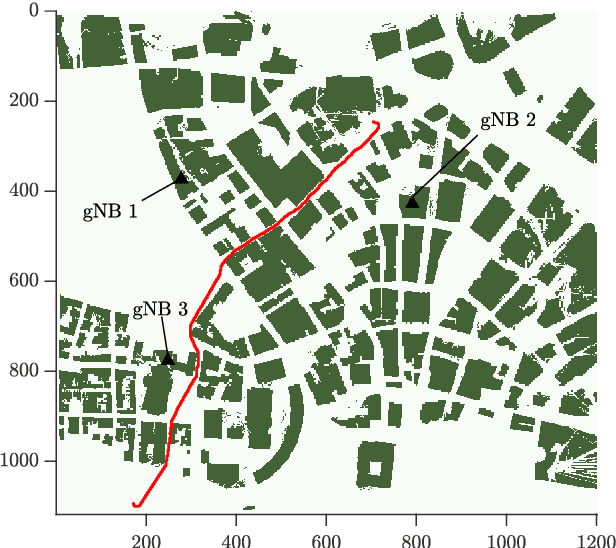
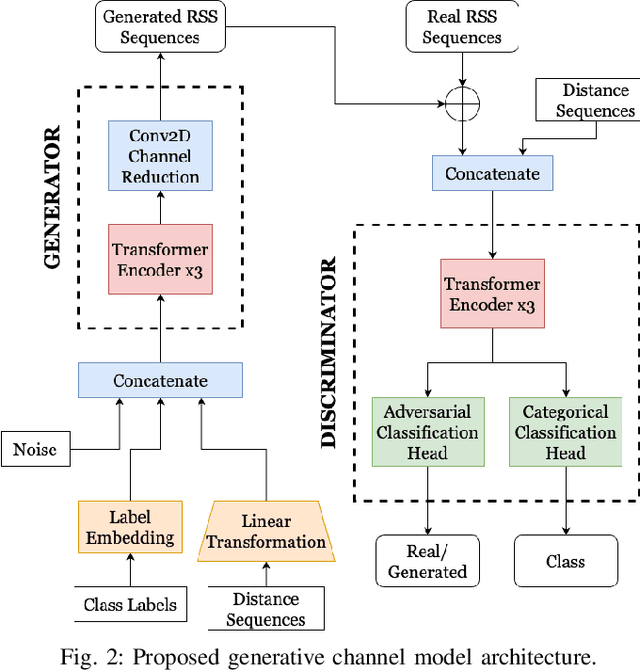
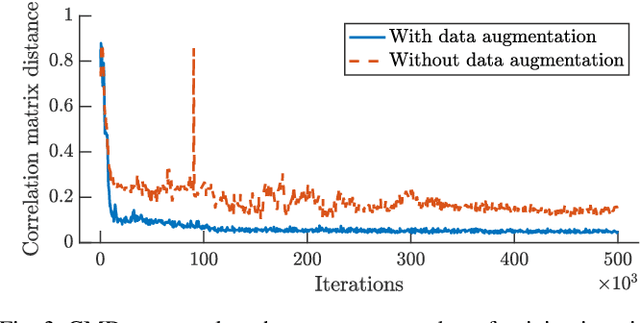

Abstract:This article proposes a generative neural network architecture for spatially consistent air-to-ground channel modeling. The approach considers the trajectories of uncrewed aerial vehicles along typical urban paths, capturing spatial dependencies within received signal strength (RSS) sequences from multiple cellular base stations (gNBs). Through the incorporation of conditioning data, the model accurately discriminates between gNBs and drives the correlation matrix distance between real and generated sequences to minimal values. This enables evaluating performance and mobility management metrics with spatially (and by extension temporally) consistent RSS values, rather than independent snapshots. For some tasks underpinned by these metrics, say handovers, consistency is essential.
A Geometry-based Stochastic Wireless Channel Model using Channel Images
Dec 15, 2023



Abstract:Due to the high complexity of geometry-deterministic wireless channel modeling and the difficulty in its implementation, geometry-based stochastic channel modeling (GSCM) approaches have been used to evaluate wireless systems. This paper introduces a new method to model any GSCM by training a generative neural network based on images formed by channel parameters. Although generative neural networks are known to capture complicated data distributions, training with the raw data of channel parameters corresponding to a specific environment yields the increased complexity of the implementation. To overcome this issue, we process the channel parameters in the form of images and utilize them to train a generative model, which substantially reduces the complexity of implementation and training time. Furthermore, through a case study, we show that the generative model trained with our proposed data-to-image mapping method faithfully represents the distributions of the original data under general wireless conditions.
Cellular Wireless Networks in the Upper Mid-Band
Sep 11, 2023



Abstract:The upper mid-band -- roughly from 7 to 24 GHz -- has attracted considerable recent interest for new cellular services. This frequency range has vastly more spectrum than the highly congested bands below 7 GHz while offering more favorable propagation and coverage than the millimeter wave (mmWave) frequencies. Realizing the full potential of these bands, however, will require fundamental changes to the design of cellular systems. Most importantly, spectrum will likely need to be shared with incumbents including communication satellites, military RADAR, and radio astronomy. Also, due to the wide bandwidth, directional nature of transmission, and intermittent occupancy of incumbents, cellular systems will need to be agile to sense and intelligently use large spatial and bandwidth degrees of freedom. This paper attempts to provide an initial assessment of the feasibility and potential gains of wideband cellular systems operating in the upper mid-band. The study includes: (1) a system study to assess potential gains of multi-band systems in a representative dense urban environment; (2) propagation calculations to assess potential cross interference between satellites and terrestrial cellular services; and (3) design and evaluation of a compact multi-band antenna array structure. Leveraging these preliminary results, we identify potential future research directions to realize next-generation systems in these frequencies.
Wireless Channel Prediction in Partially Observed Environments
Jul 03, 2022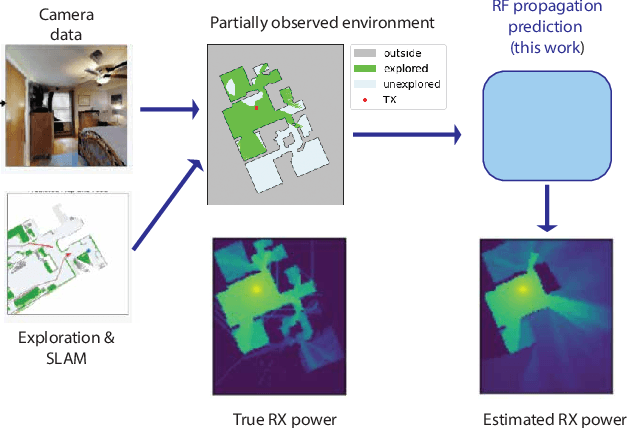

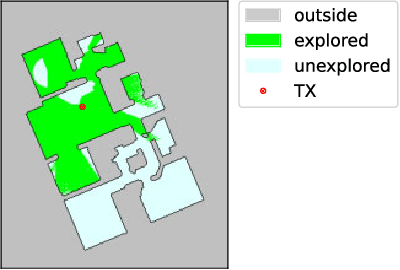

Abstract:Site-specific radio frequency (RF) propagation prediction increasingly relies on models built from visual data such as cameras and LIDAR sensors. When operating in dynamic settings, the environment may only be partially observed. This paper introduces a method to extract statistical channel models, given partial observations of the surrounding environment. We propose a simple heuristic algorithm that performs ray tracing on the partial environment and then uses machine-learning trained predictors to estimate the channel and its uncertainty from features extracted from the partial ray tracing results. It is shown that the proposed method can interpolate between fully statistical models when no partial information is available and fully deterministic models when the environment is completely observed. The method can also capture the degree of uncertainty of the propagation predictions depending on the amount of region that has been explored. The methodology is demonstrated in a robotic navigation application simulated on a set of indoor maps with detailed models constructed using state-of-the-art navigation, simultaneous localization and mapping (SLAM), and computer vision methods.
Understanding Energy Efficiency and Interference Tolerance in Millimeter Wave Receivers
Jan 01, 2022
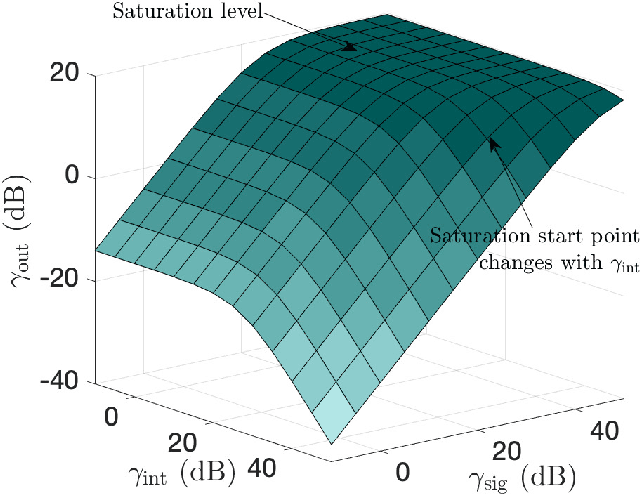
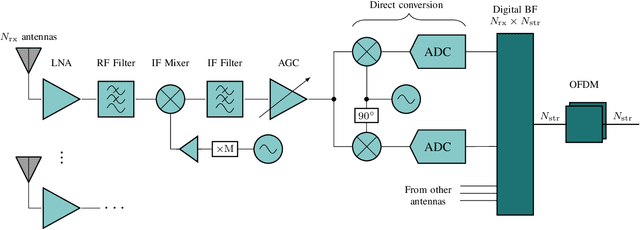
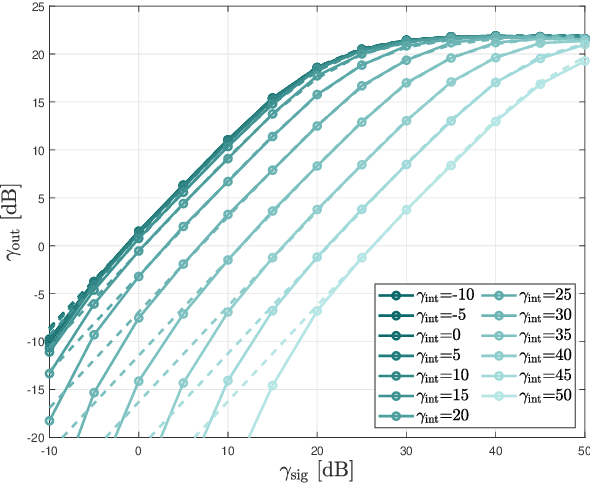
Abstract:Power consumption is a key challenge in millimeter wave (mmWave) receiver front-ends, due to the need to support high dimensional antenna arrays at wide bandwidths. Recently, there has been considerable work in developing low-power front-ends, often based on low-resolution ADCs and low-power mixers. A critical but less studied consequence of such designs is the relatively low-dynamic range which in turn exposes the receiver to adjacent carrier interference and blockers. This paper provides a general mathematical framework for analyzing the performance of mmWave front-ends in the presence of out-of-band interference. The goal is to elucidate the fundamental trade-off of power consumption, interference tolerance and in-band performance. The analysis is combined with detailed network simulations in cellular systems with multiple carriers, as well as detailed circuit simulations of key components at 140 GHz. The analysis reveals critical bottlenecks for low-power interference robustness and suggests designs enhancements for use in practical systems.
Millimeter-Wave UAV Coveragein Urban Environments
Apr 05, 2021
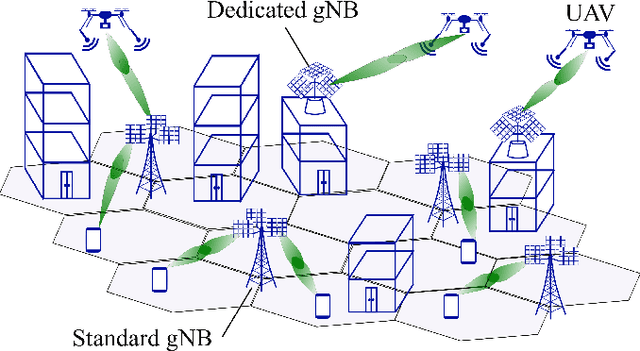
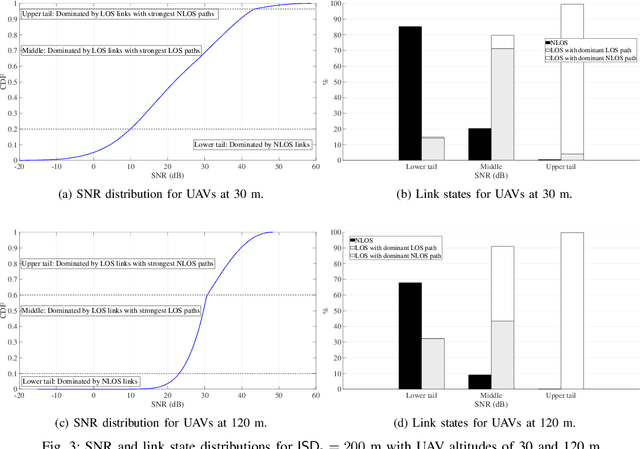

Abstract:With growing interest in mmWave connectivity for UAVs, a basic question is whether networks intended for terrestrial users can provide sufficient aerial coverage as well. To assess this possibility, the paper proposes a novel evaluation methodology using generative models trained on detailed ray tracing data. These models capture complex propagation characteristics and can be readily combined with antenna and beamforming assumptions. Extensive simulation using these models indicate that standard (street-level and downtilted) base stations at typical microcellular densities can indeed provide satisfactory UAV coverage. Interestingly, the coverage is possible via a conjunction of antenna sidelobes and strong reflections. With sparser deployments, the coverage is only guaranteed at progressively higher altitudes. Additional dedicated (rooftop-mounted and uptilted) base stations strengthen the coverage provided that their density is comparable to that of the standard deployment, and would be instrumental for sparse deployments of the latter.
Lightweight UAV-based Measurement System for Air-to-Ground Channels at 28 GHz
Mar 31, 2021

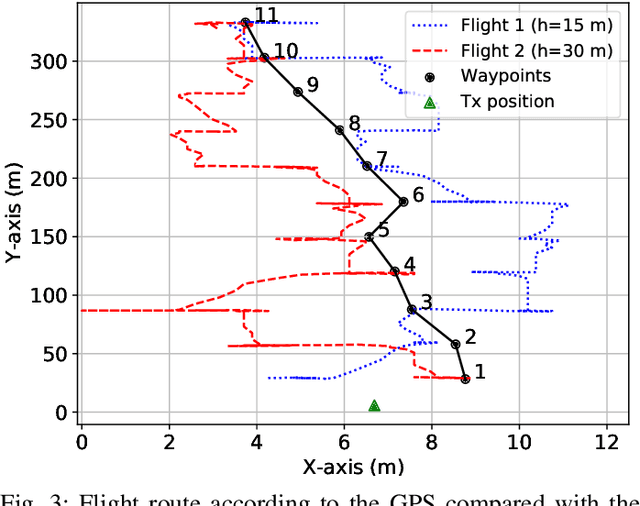
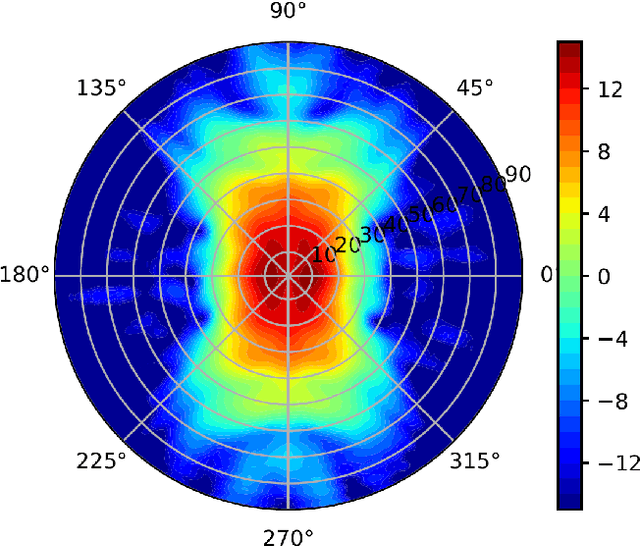
Abstract:Wireless communication at millimeter wave frequencies has attracted considerable attention for the delivery of high-bit-rate connectivity to unmanned aerial vehicles (UAVs). However, conducting the channel measurements necessary to assess communication at these frequencies has been challenging due to the severe payload and power restrictions in commercial UAVs. This work presents a novel lightweight (approximately 1.3 kg) channel measurement system at 28 GHz installed on a commercially available UAV. A ground transmitter equipped with a horn antenna conveys sounding signals to a UAV equipped with a lightweight spectrum analyzer. We demonstrate that the measurements can be highly influenced by the antenna pattern as shaped by the UAV's frame. A calibration procedure is presented to correct for the resulting angular variations in antenna gain. The measurement setup is then validated on real flights from an airstrip at distances in excess of 300 m.
 Add to Chrome
Add to Chrome Add to Firefox
Add to Firefox Add to Edge
Add to Edge